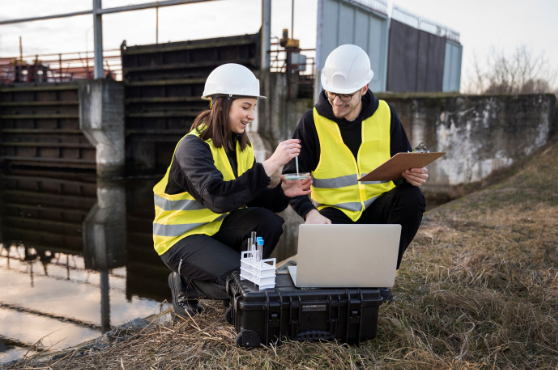The changing face of building maintenance and repair in Melbourne highlights foundation health. The underpinning melbourne homes and structures is a crucial long-term stability and safety approach. This approach formerly entailed major excavation and physical reinforcing of building foundations, which was successful but disruptive and expensive. As Rectify and other firms promote chemical underpinning, the story is changing. This innovative foundation repair approach promises to raise the bar for efficacy and minimal intervention.
Chemical underpinning is fundamentally different from traditional underpinning. Chemical underpinning injects a geopolymer resin into the ground instead of digging and replacing dirt beneath a foundation. This resin expands and solidifies, filling soil spaces and enhancing bearing capacity. This technique targets foundation stability issues without extensive excavation due to its accuracy and control.
Chemical underpinning has many benefits, especially in Melbourne’s unique environmental and urban context. Physical disruption reduction is a significant benefit. Traditional underpinning methods can disrupt daily life and pollute residential areas with noise and dust. Chemical underpinning, on the other hand, requires minor drilling to inject resin. This means less noise, mess, and time, which makes this strategy appealing to residential and commercial property owners.
In addition, chemical underpinning is highly efficient and fast. Traditional methods can take weeks or months, depending on project complexity and scale. Chemical underpinning can be done in days, minimizing property utilization and operational restrictions. Time efficiency affects cost-effectiveness. Chemical underlying materials and technology may cost more upfront, but fewer worker hours and incidental disturbance frequently make it cheaper in the long term.
Chemical underpinning has advantages in building and repair methods that prioritize the environment. Traditional excavation methods remove enormous amounts of soil and change water discharge patterns, disrupting local biodiversity. Chemical underpinning is less destructive to the environment, maintaining more of the natural landscape and reducing adverse ecological effects. Chemical underpinning also uses eco-friendly products, making foundation repairs greener.
As an industry pioneer, Rectify has shown Melbourne the practical and environmental benefits of chemical underpinning. Using cutting-edge technology and materials, they provide structural integrity while adhering to modern standards of efficiency, environmental responsibility, and little interruption. Their technique shows how chemical underpinning can solve common foundation challenges with exceptional accuracy and attention.
The switch from traditional to chemical foundations is difficult. Industry personnel must learn new materials, procedures, and equipment. Property owners and stakeholders must also be convinced of this new method’s benefits and reliability. This requires shifting from viewing foundation repairs as invasive and laborious to precise, clean, and less disruptive.
In this situation, education and awareness are crucial. Companies like Rectify help people move to chemical underpinning by providing clear, thorough information on its benefits and processes. Successful Melbourne and international case studies demonstrate the real-world benefits of chemical underpinning. These accounts show the technical components of the procedure and personal stories of minimal disturbance, quick resolution, and peace of mind.
Chemical underpinning in Melbourne is transforming the building and maintenance sector to address urban development and environmental sustainability. The culturally rich and dynamic metropolis faces distinct geological and ecological difficulties that require new solutions like chemical underpinning. This technology strengthens building structures and meets the growing desire for less invasive and eco-friendly construction.
Melbourne’s sandy, clay, and silty soils present a problem for chemical underpinning. Differential settlement in certain soils can cause structural issues in building structures. Precision chemical underpinning allows targeted stabilization in these different soil conditions, making it more customized than traditional approaches. This personalized approach improves foundation stability and endurance by injecting glue precisely into particular locations to match each site’s geological circumstances.
Historical buildings and dense residential areas make standard foundation procedures difficult in Melbourne’s metropolitan context. Using chemical underpinning, the visual and structural integrity of old buildings can be preserved without affecting nearby houses. This low-profile solution is ideal in crowded urban areas where space and access are restricted, and community aesthetics and heritage are essential.
Chemical underpinning has profound environmental benefits, especially in Melbourne, a city recognized for its sustainability and ecological activities. Due to fewer machinery, material transportation, and soil disturbance, the method decreases foundation repair carbon emissions. Chemical underpinning supports Melbourne’s sustainability aims by employing non-toxic, biodegradable resins.
The economic effects of chemical chemistry in Melbourne are enormous. Although more expensive than traditional procedures, the long-term savings are significant. Chemical underpinning is cost-effective for residential and commercial property owners due to lower labor expenses, shorter project durations, and less business disruption. Stabilized structures last longer and cost less, making this an economically viable choice.
Regulatory agencies and standards are increasingly crucial in guaranteeing chemical quality and safety as the industry evolves. Melbourne’s regulatory system must adapt to these innovative methods to assure chemical underpinning project training, implementation, and monitoring. This will ensure safety and efficacy, build public trust, and increase technique adoption.
Public education and stakeholder involvement are crucial to Melbourne’s adoption of chemical underpinnings. Companies like Rectify can reassure property owners and industry experts by demystifying and promoting the process. Workshops, seminars, and case studies help stakeholders understand the process and become champions for this advanced foundation restoration approach.
Is GetExtendly the Ultimate Support Tool for GoHighLevel in 2024?
In 2024, a tool called GetExtendly is meant to be the ultimate support for GoHighLevel. It’s like having a helpful...
Read more





